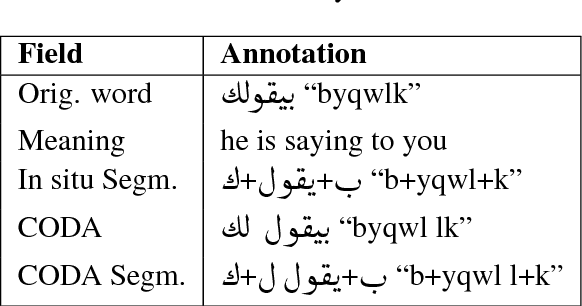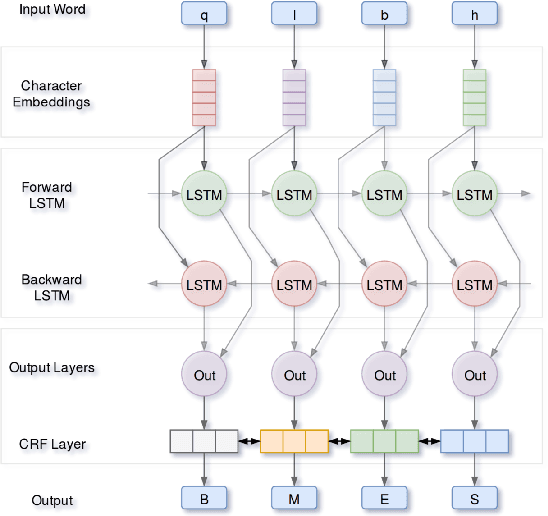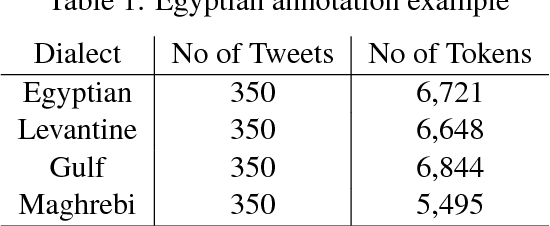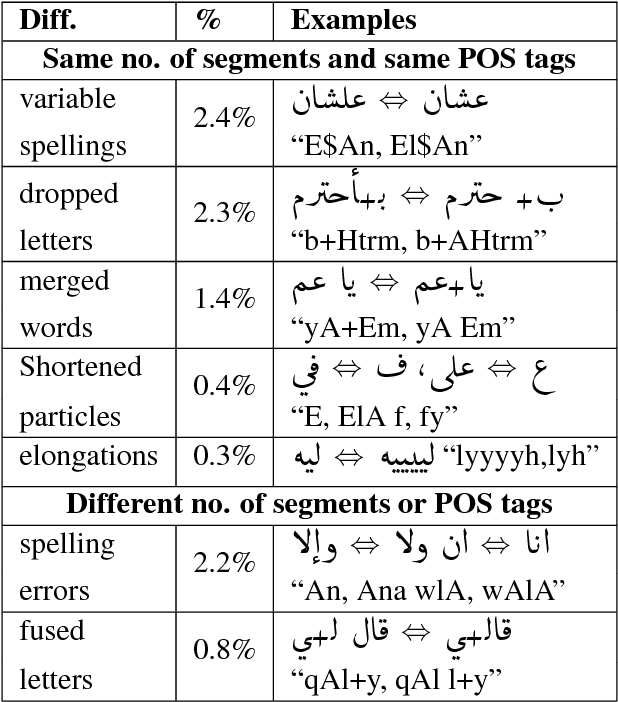Kallmeyer Laura
Arabic Multi-Dialect Segmentation: bi-LSTM-CRF vs. SVM
Aug 19, 2017



Abstract:Arabic word segmentation is essential for a variety of NLP applications such as machine translation and information retrieval. Segmentation entails breaking words into their constituent stems, affixes and clitics. In this paper, we compare two approaches for segmenting four major Arabic dialects using only several thousand training examples for each dialect. The two approaches involve posing the problem as a ranking problem, where an SVM ranker picks the best segmentation, and as a sequence labeling problem, where a bi-LSTM RNN coupled with CRF determines where best to segment words. We are able to achieve solid segmentation results for all dialects using rather limited training data. We also show that employing Modern Standard Arabic data for domain adaptation and assuming context independence improve overall results.
 Add to Chrome
Add to Chrome Add to Firefox
Add to Firefox Add to Edge
Add to Edge